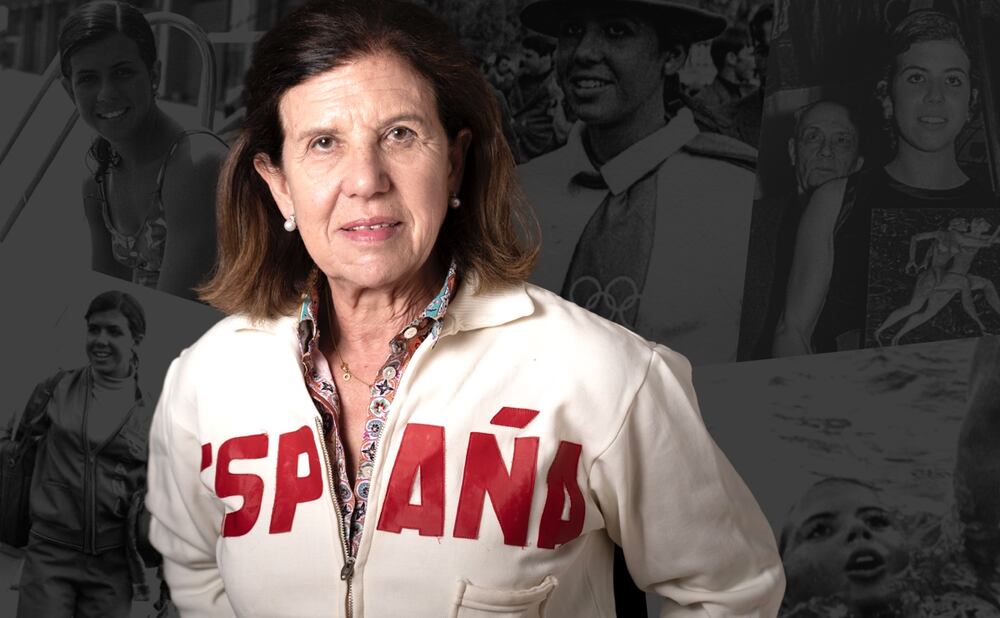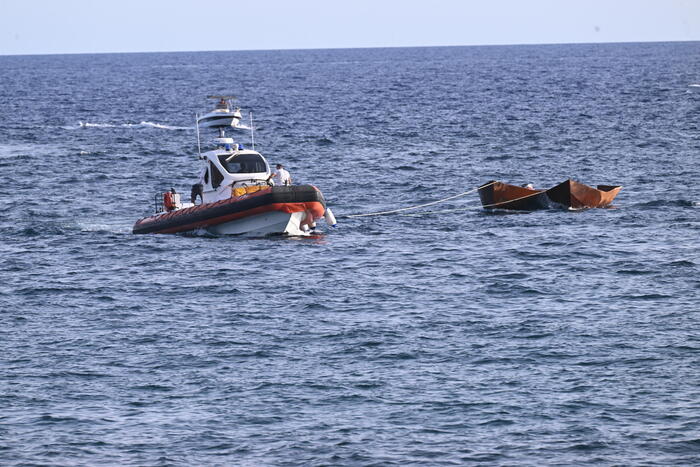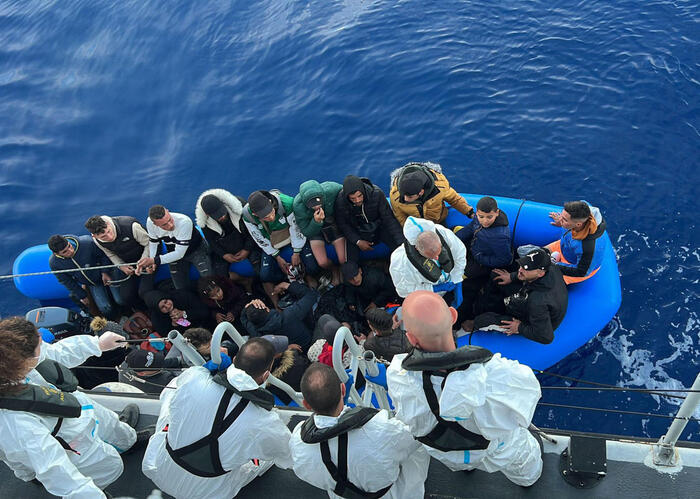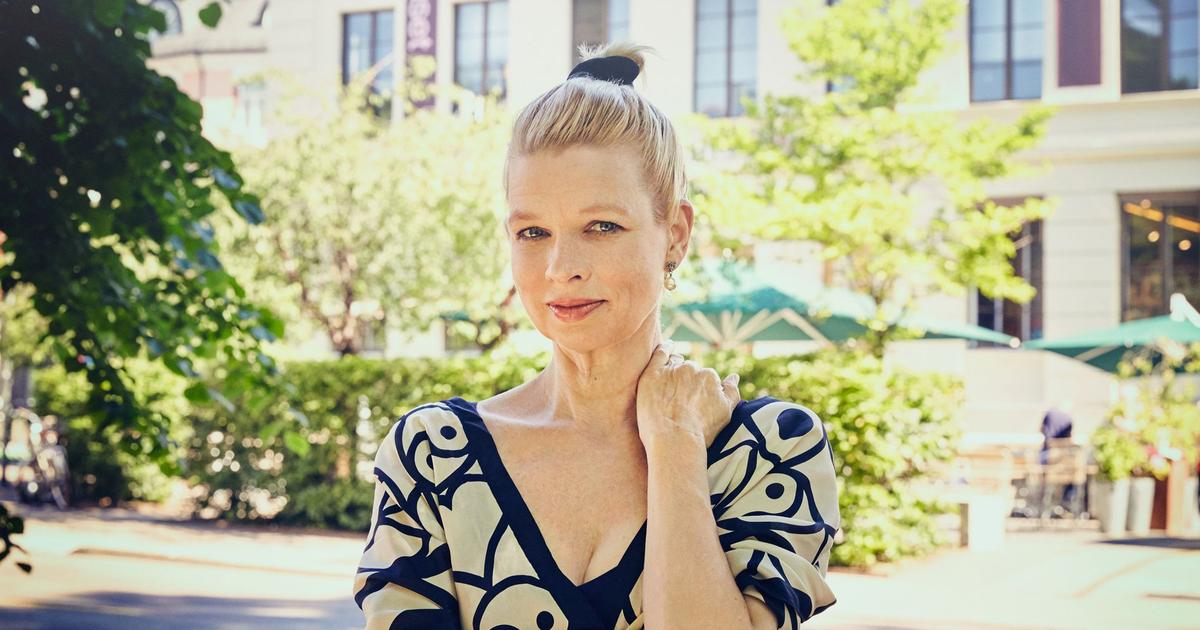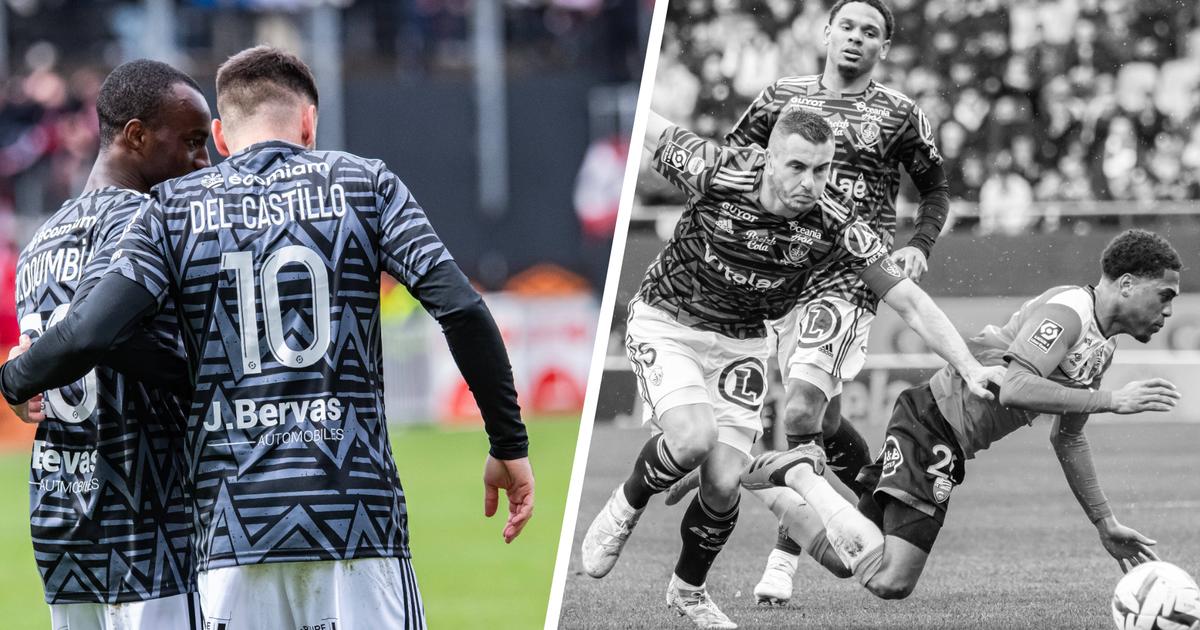The glare of a 16-year-old girl illuminated the impoverished Spanish sport at the Mexico-68 Olympic Games.
In those years, the mere condition of feeling like an athlete was unique for any Spanish woman and reaching Olympic status was unusual.
In this context, Mari Pau Corominas' qualification for the Olympic final and her seventh place in the 200 backstroke was a feat.
In men, Santiago Esteva also became the first finalist in a Games, in Mexico, and finished fifth in the 200 backstroke.
MORE INFORMATION
The conquest of a masculine space
The emergence of Corominas, unprecedented and in parallel with the few figures of the time, Manuel Santana in tennis for example, had something fortuitous and a lot of personal improvement.
It began in the swimming pool of the Betania school in Barcelona.
He dove in and put water in between.
"If I did 40 seconds, the second did 50. They saw that I had tremendous ease," recalls the Barcelona now, at 68 years old.
“Nobody taught me to swim.
We were six brothers and we learned alone.
A lot of recreational sport was practiced in my family.
We went skiing, to the mountains, we played tennis ”.
The school monitor spoke with his father, who ran a textile company in Sabadell.
There, at the first club to be hired by a foreign coach, the Dutch Kees Oudusgest, she was forged along with a group of outstanding swimmers.
"In my first year, I was third in Spain," he explains.
And the following year, champion.
I did it five times in a row and I got to have nine records, not only for the back, my specialty, but also for cross, styles and relays ”.
In 1966, in Utrecht, she was the first Spanish finalist in the European Championships.
The 16-year-old swimmer was the first Spanish in an Olympic final.
Sport was a male preserve.
The team that represented Spain in Mexico-68 consisted of 122 men and only two women, she and another swimmer, Pilar Von Carsten, from Real Canoe, Mercedes' sister, who did not join the team due to lack of budget.
Nothing strange.
Spain had eight Olympic medals, all in men, and had only had a minimal female representation in three Games, two in Paris-24, 11 in Rome-60 and three in Tokyo-64.
Corominas' seventh place in the 200 backstroke final in Mexico-68 was a before and after, although it took until Sydney 2000 to see a Spanish swimmer on an Olympic podium, Nina Jivanesvkaia, bronze in the 100 backstroke.
The Catalan swimmer attributes the backwardness of women's sport to the social conditions of the time.
“In swimming they always treated us very well and we had equal opportunities.
What happened is that society did not make it easy for women to play sports like men.
My mother explained to me that her friends told her: 'How can you let your daughter do so much sport!
She's going to get muscled, exaggeratedly tough. '
My mother replied: 'no problem'.
With very precarious facilities, with hardly any figures or great successes, the Spanish athletes saw themselves very far from the international elite.
“The referents were tennis players like Santana.
Together with Gisbert and Arilla, the great tennis saga began.
In girls, there were skiers like Conchita Puig, and some gymnast.
Women's team sport almost did not exist.
In swimming, already at the Tokyo Games in 1964, we had two swimmers, Isabel Castañé and Rita Pulido, a nice and beautiful Canarian.
Championship he was going to, a championship that gave the prize to the most beautiful.
Because each championship had a
miss
.
That, now, would be terrible.
And there was also Miquel Torres, who had competed in the Rome Games ”.
The newspaper clippings, magazines and objects that her mother collected with care, enliven her memory.
“I was not aware of the importance of what I was going to do.
You assimilate it over time.
When we returned from Mexico we had a good reception, and they thanked us for it.
We even went to see Franco.
Nor is it that it was a wonderful reception because there were no medals.
But I started to be known.
They invited us to receptions, they gave you diplomas… ”.
Twice the best Spanish athlete was chosen, in 1966 and 1968.
"I opened a door," he concedes.
“Then came a more decadent time.
Many of my records lasted eight or ten years.
Until Silvia Fontana beat some ”.
The precarious means began with the lack of professionals to advise and support them.
“The coach at that time assumed the tasks for which now there is a whole team.
So he was the psychologist, the dietitian, the pseudo physiotherapist, who told us what to eat and how much to sleep.
They gave us a couple of medical checkups a year, and that's it.
We did not receive financial compensation, they only paid us for trips and hotels ”, he says.
He realized that his progression was stalling.
He applied for a scholarship to train in the United States.
He got it thanks to the help of Santi Esteva and his father, who advanced money that was not reimbursed until a year later.
“It was all very amateurish.
Lucky for the family I had! ”.
He moved to the United States to train under Doc Counsilman, one of the best technicians in history, and together with the legendary Mark Spitz, winner of four medals at Mexico-68, a prelude to his seven legendary golds at Munich-72.
“It cost me a lot.
I trained very hard.
She was the only woman there.
I finished every workout exhausted.
Every time I wrote a letter to my family, I said 'my legs hurt I can't take it anymore'.
After 14 days, the time it took for the roundtrip mail, I got the answer: 'Take aspirin!'
It had a lot of ramps.
I used to take four or five aspirin a day.
This would be outrageous now because they cause stomach sores, but we had no dietitian.
We were in a city in Indiana (Bloomington) and it was freezing cold.
In February, when we got out of the water our hair would freeze ”.
There he improved his times and his English.
“When I returned and participated in the Europeans (in 1970, in Barcelona), I saw that I had not improved what I had thought.
So, at 18, I retired.
No one came to ask me why you quit swimming, or 'we help you', or 'we give you a scholarship'.
She was the only swimmer who was doing something internationally.
If you did not have someone by your side who was motivating and accompanying you, it had no reason to be.
A satisfaction for me alone did not compensate me.
I started my first year of my degree (Economics) and I saw that training with the elite and studying was quite incompatible.
You can be sure that they didn't give us anything ”.
I finished every workout exhausted.
Every time I wrote a letter to my family, I said 'my legs hurt, I can't take it anymore'
Mari Paz Corominas, first Olympic finalist in the history of Spanish sport in the Mexico-68 Olympics.
Photo: Gianluca Battista
Now, enjoy the excellent level of some swimmers.
“Mireia (Belmonte), Jessica (Vall)…, the girls of the synchro… it's to take off their hats, they have a great level.
Now, I give more importance to what I did.
Surely we opened the door for good swimmers later, yes.
I have met Mireia Belmonte, but I don't think she even knows who I am.
It's that 50 years ago… ”.
The Games of Mexico left a sports and political narrative for history.
There were legendary records by Bob Beamon, Jim Hines, Tommie Smith and Lee Evans, Dick Fosbury's innovation in the high jump, the appearance of Mark Spitz and Tommie Smith and John Carlos raised their fists on the podium against racism.
“If I made it to the final it was partly because of the good programming that the Spanish Olympic Committee did.
It made it possible for us to be in Mexico five weeks earlier to acclimatize to the altitude (2,240 meters above sea level).
Other swimmers who surpassed us did not acclimatize.
In the final, the truth is, I felt quite small next to the Americans, the Russians, the Germans.
They imposed on me, I didn't have their size ”.
Those Games were also convulsed by the political and social situation in Mexico.
Ten days before the start there was the Massacre of the Three Cultures, where dozens of protesting students lost their lives at the hands of the army and paramilitary militias.
“We found out second.
They kept us in the Olympic Village for three days without being able to leave, but they never explained what had happened.
I was not aware until I returned to Spain.
The Games were about to be suspended, but all the athletes were already in Mexico and in the end it was decided that they should be held.
They put us police in the Olympic Village.
I was not scared.
At 16 you weren't very aware of whether it was going to get worse ”.
The years of 'We count on you'
Start of the big dates.
Spain organizes the final of the European Soccer Championship in 1964. A year later, Madrid's candidacy for the 1972 Olympic Games was presented. In 1966, Spain was granted the organization of the 1982 Soccer World Cup.
New policies.
In 1966 Juan Antonio Samaranch was appointed National Delegate of Physical Education and Sports and president of the Spanish Olympic Committee.
It promotes the “We Count on You” campaign.
Mexico-68.
Spain competed in 11 disciplines with 124 athletes, 122 men and 2 women.
He did not get any medals as happened in Tokyo-64 where he participated with 53 athletes, 50 men and 3 women.
Rita Pulido and Isabel Castañé were the first Spanish swimmers to participate in the Games, those of Rome-60.
In 1968 there were 16,697 federative swimming licenses in Spain;
in 2020, 69,483.
Corominas is the first Spanish finalist in some Games, those of 1968, in the 200 backstroke.
Nina Jivanevskaia is the first swimmer to win a medal at the Sydney 2000 Games, with a bronze in the 100 backstroke.
Mireia Belmonte achieved the first gold medal of a Spanish swimmer in the Games, those of Rio 2016, in the 200 butterfly.
the whole series
Mari Pau Corominas
Ana Astobieta
Carmen Valero
Cristina May
Elvira larrazabal
Encarnacion Hernandez
Irene González and Nita Carmona
Lili alvarez
Maria Planas
Victoria Hernández and Conchi Amancio
Sara estevez
Credits
Coordination: Brenda Valverde
Art direction: Fernando Hernández
Design: Nacho Povedano
Layout: Alejandro Gallardo
Photography: Gianluca Battista
Video: Javier Marmisa, Gianluca Battista and Olivia López Bueno

